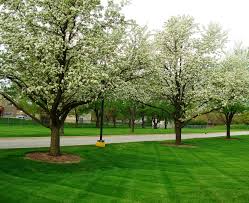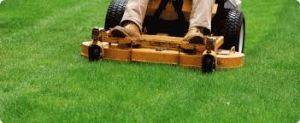 Importance of Turf-grasses and Trees
Importance of Turf-grasses and Trees
Turf-grasses affect the lives of all people living in the United States today. But in the southern states, where turf-grasses grow year-round, their impact on people’s lives is great.
A nationwide Harris poll published in Life magazine showed that most Americans wished to be surrounded by green grass and trees (Hooper 1970). Indeed, turf-grasses and trees are major consideration when selecting a home site, a fact which explains why so many residential developments begin with a golf course. Even among renters a green lawn is a contributing factor in choosing apartments and condominiums. Whether the effect of green grass is real or imagined, a vista of manicured turf-grass stimulates people’s enthusiasm, accents their awareness to their surroundings, and renews their vitality. Psychologists and physicians have demonstrated that people feel better and recover faster when placed in an environment with green grass and trees (Ulrich 1986).
Selecting the Right Mowing Height
All grass varieties should be mowed at or near their optimal mowing height. This will keep grass healthy and dense (highest number of shoots per unit area). Higher density means more soil surface shading, which severely restricts the germination of many annual grassy and broadleaf weeds. Maintaining a dense and healthy turf is the best weed control.
Selecting the right mowing height also means selecting the right mower. Do not invest in high density Bermuda grass or Zoysia grass hybrid varieties if you plan to mow at three inches with a rotary mower. Many of the varieties available today require mowing height at or below one inch, which cannot be done effectively with a rotary mower.
| Variety | Mowing Height Range | Optimal Mowing Height (Assumes Correct Frequency) |
|---|---|---|
| Buffalograss | 2 to 4 inches | 2.5 inches |
| Centipedegrass | 1.5 to 2.5 inches | 2 inches |
| Common Bermudagrass | 1 to 3 inches | 1.5 inches |
| Hybrid Bermudagrass | 0.75 to 2 inches | 1 inch |
| Kentucky Bluegrass | 1.5 to 3 inches | 2 inches |
| St. Augustinegrass | 2.5 to 4 inches | 2.5 inches |
| Tall Fescue | 2 to 4 inches | 2.5 inches |
| Texas Bluegrass (Reveille) | 1.5 to 3 inches | 2 inches |
| Zoysia japonica (coarse bladed zoysia) | 1 to 2.5 inches | 1.5 inches |
| Zoysia matrella (fine bladed zoysia) | 0.75 to 2.5 inches | 1 inch |
How Frequent to Mow
Seasons, weather, and nutrient availability, are some of the many things that can affect grass growth. The best and most safe rule of thumb is to never remove more than 1/3 of the leaf blade at any one time. Lawns are being mowed too infrequently if there are piles of grass clippings left after each mowing. Consider a farmers hay field. Farmers remove close to 90% of the grass plants leaf surface when cutting hay. The grass left after the hay is baled turns a golden tan color. The color change take place because grass plants are not capable of recovering from large amounts of stress for quite a while. The small amount of leaf surface left on the plant is not enough to maintain the physiological activities (photosynthesis) for plant energy.
Lawns are being mowed too infrequently if there are piles of grass clippings left after each mowing. Consider a farmers hay field. Farmers remove close to 90% of the grass plants leaf surface when cutting hay. The grass left after the hay is baled turns a golden tan color. The color change take place because grass plants are not capable of recovering from large amounts of stress for quite a while. The small amount of leaf surface left on the plant is not enough to maintain the physiological activities (photosynthesis) for plant energy.
Grass plants have a “growing point” where all of the leaves originate. The growing point stays near the soil surface when grass is mowed frequently. When people let their lawns get really “hairy,” the growing point begins to elevate from the soil surface. When finally mowed, the growing point may be cut and removed with the rest of the clippings. This means death to the plant. Frequent mowing, never removing more than 1/3 of the grass blade ensures that the growing point will stay near the soil surface and the turf will stay healthy and dense.

